14 Health Benefits of Bhujangasana (Cobra Pose) & Steps to Perform
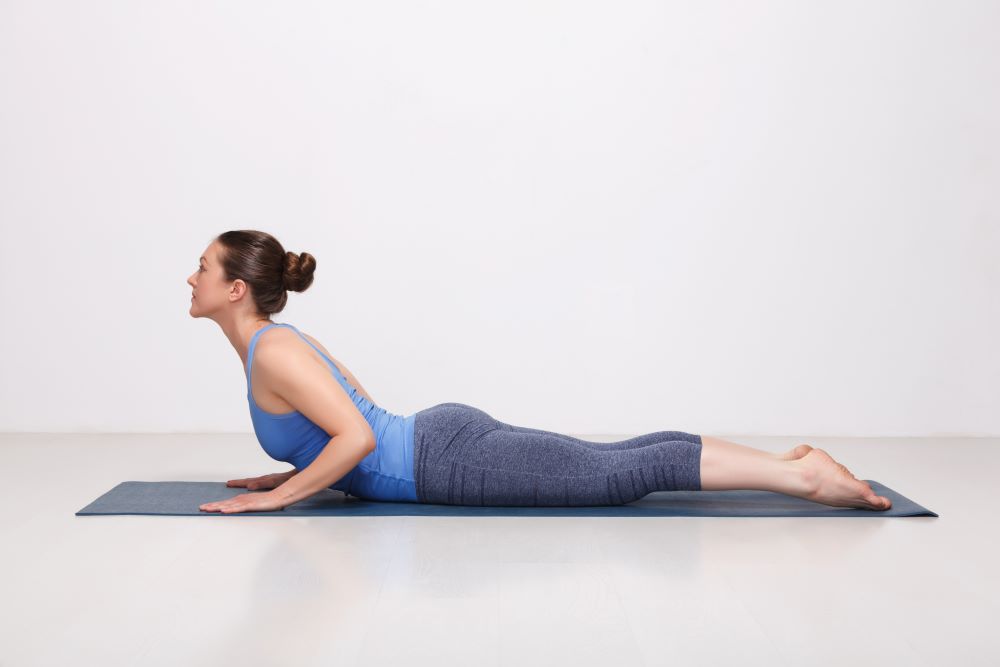
Bhujangasana intertwines physical strength with mental stability. People at different levels, from beginners to those skilled in this matter, should look deeply into the inner world of a given pose and make it part of their lifestyle.
This asana is supposed to heal back problems and help one feel better and more flexible. However, people with spine ailments must approach this exercise carefully since their safety is important.
Learn how to do it properly, learn different types, observe specific rules necessary for a well-rounded yoga experience, and understand the numerous benefits of Bhujangasana.

Table of Contents

What is Bhujangasana (Cobra Pose)?
In Sanskrit, ‘Bhujanga’ means ‘cobra’, and ‘asana’ means ‘posture’. As part of the Surya Namaskar, this yoga posture can positively impact your health. Bhujangasana is a gentle backbend yoga that falls under hatha yoga. It can also be considered an alternative to Urdhva Mukha Svanasana in the cycle of Surya Namaskar.
Also known as Cobra Pose, it was first depicted in the Gheranda Samhita during the 17th century. Since then, its primary function has been to keep you active and supercharged throughout the day.
How Often Can You Practise Bhujangasana Steps?
Practising Bhujangasana depends completely on your fitness level, flexibility, and whether or not you have any health issues. Typically, it is better for beginners to begin with doing Bhujangasana 2-3 times a week, leaving one or two days between these sessions to give your body a chance to recover.
As you get used to this pose and your body becomes more flexible, the frequency can increase incrementally to 4-5 times per week.
Top 14 Health Benefits of Bhujangasana
Let’s discover the numerous benefits of Bhujangasana, which will lead you to holistic well-being. It differentiates into physical, mental and other benefits. Here are some of the listed health benefits of this asana:
Physical Benefits of Doing Bhujangasana
1. Increases Flexibility
As mentioned above, this yoga pose stretches many body parts. This stretching creates motion in muscles, which improves flexibility. A flexible body can significantly impact your posture and, thus, gain confidence.
2. Reduces Body Fat
Yoga can be the best practice to improve metabolism, which increases calorie burn. This particular pose targets the abdomen, buttocks, etc., which gets stretched while performing it. As a result, regular practice can tone the muscles and reduce body fat.
3. Boosts Digestion
Digestion problems are common nowadays. In addition, people are suffering from constipation or heartburn, affecting their work and daily life. This yoga targets the abdomen directly, improving gastrointestinal functioning. As a result, the digestive organs secrete more fluids, causing better food absorption.
4. Unblocks Chakras
The seven chakras of our body balance our physical, mental, and spiritual health. One such chakra is the Kundalini Chakra, located at the base of the spine. This yoga pose activates the Kundalini Chakra, resulting in easy energy flow throughout the body. Unblocked chakras can keep you active and energised the entire day, and you can achieve your goals effortlessly.
5. Improves Blood Circulation
Proper blood circulation is necessary to have better oxygen flow throughout the body. This results in rapid wound healing, flawless skin, a sharp mind and a healthy heart. The cobra pose initiates better circulation of oxygen in the blood, promoting proper nutrient distribution and elimination of waste.
6. Strengthens Muscles
As you carry stretching while maintaining a breathing cycle during this yoga it causes movement in muscles. In addition, this yoga posture includes lifting the body weight on the shoulder, hands and thigh. As a result, it strengthens the biceps, triceps and abdomen muscles.
7. Reduces Respiratory Problems
Bhujangasana unlocks chest congestion and clears the passage of the heart and lungs. This happens due to stretching, which opens the chest cavity and gives more space for the ribcage to open up. It is also a tremendous remedial posture for asthma and other respiratory diseases.
8. Regulates Menstrual Problems
This yoga pose works the abdomen directly and thus regulates any menstrual irregularity. After practising this yoga, your menstrual cycle does not get delayed. Besides this, you will not suffer from cramps and can have a painless period.
Mental Benefits of Doing Bhujangasana
9. Reduces Stress
While practising this yoga position, deep rhythmic breathing helps calm the mind and lower anxiety levels.
10. Boosts Mood
Performing cobra pose stimulates the production of endorphins, which our body naturally makes to feel good, giving a sense of wellness and a positive attitude.
11. Enhances Concentration
Since attention is paid to breath control and proper body alignment, one’s focus significantly improves, cultivating mindfulness and mental clarity.
Other Benefits of Bhujangasana
12. Sooth the Sciatic Nerve
These include mild stretching, hot packs, and low-impact exercises that help relax the sciatic nerve thereby reducing pain and tension, allowing comfort and mobility.
13. Maintain Posture
Small changes in posture, exercises to strengthen the core, and techniques of conscious movement help create an alignment in the spine that minimises stress and prevents postural ailments.
14. Tone the Buttocks
The asana activates the gluteal muscles and facilitates increased muscle use in the buttocks. Therefore, regularly practising Bhujangasana can improve pelvic stability due to improved posture, with toned buttocks being one of its effects.
Types of Bhujangasana
Uncover the flexibility of Bhujangasana through its original posture, which signifies mightiness in addition to stamina, and its many other forms that have different advantages, thus meeting diverse needs and capacities.
1. Bhujangasana (Classic Cobra Pose)
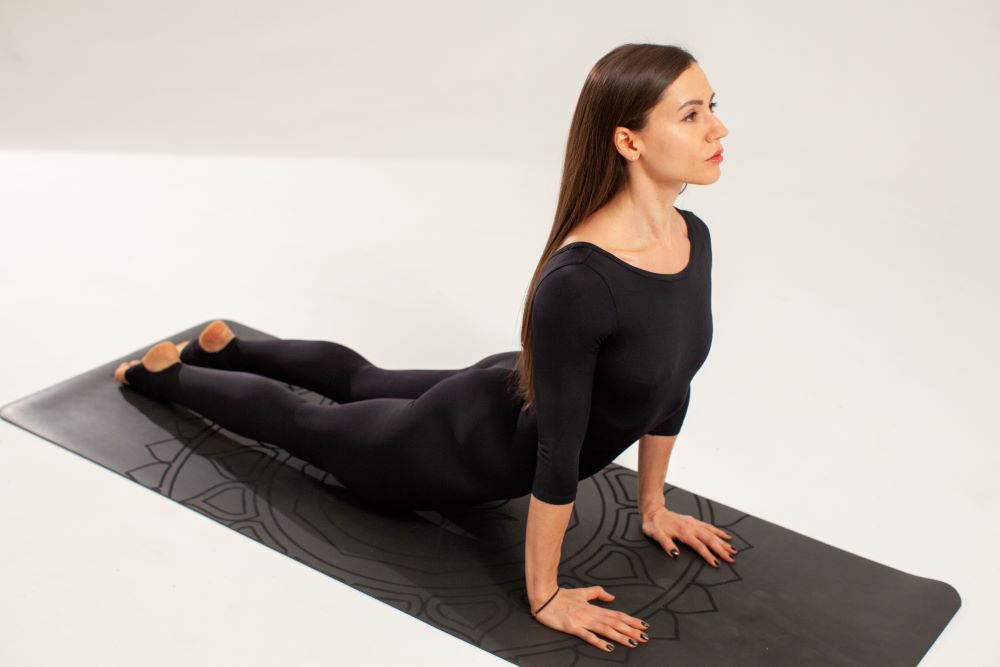
In this traditional variation, practitioners lie on the mat with palms under their shoulders and elbows tucked to their sides. They inhale gently and press through the hands to lift the chest and head from the floor, arching the spine while the hips remain grounded.
2. Ardha Bhujangasana (Half Cobra Pose)

This variation is good for beginners or those who may need to be more flexible. Practitioners gently backbend by lifting the chest off the ground while keeping the rest of the lower body and pelvis anchored. It offers a modifying stretch that gives greater benefits.
3. Sarpasana (Snake Pose)
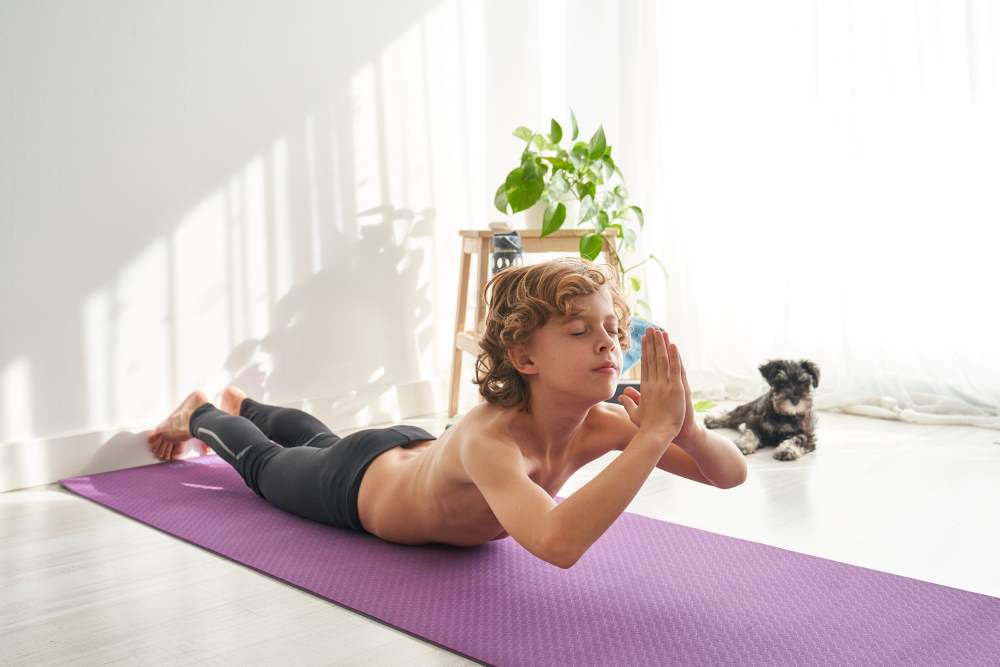
In this variation, practitioners raise the entire torso upwards, away from the floor. They extend their arms straight out in front of them and actively engage muscles at the back for a deeper backward bend. The pose looks like a snake raising its hood, hence its name.
4. Bhujangasana with Bhramari Pranayama (Bee Breath)
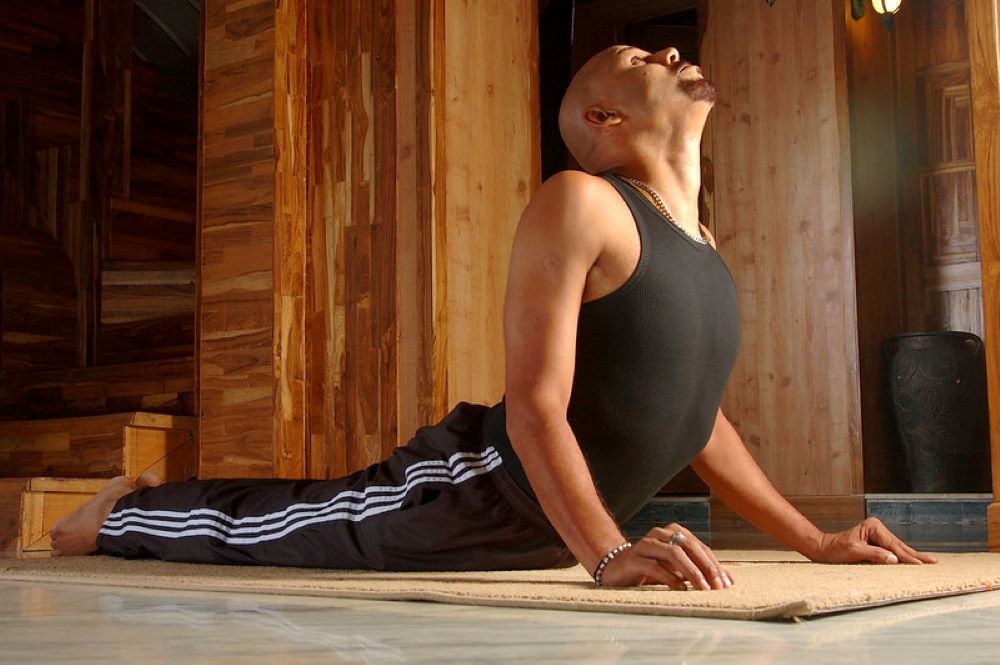
This variation involves performing a cobra pose while taking deep breaths and then letting out air slowly, making buzzing sounds like a bee. It is called Bhramari pranayama, and it results in relaxation and inner peace.
5. Dynamic Bhujangasana Flow
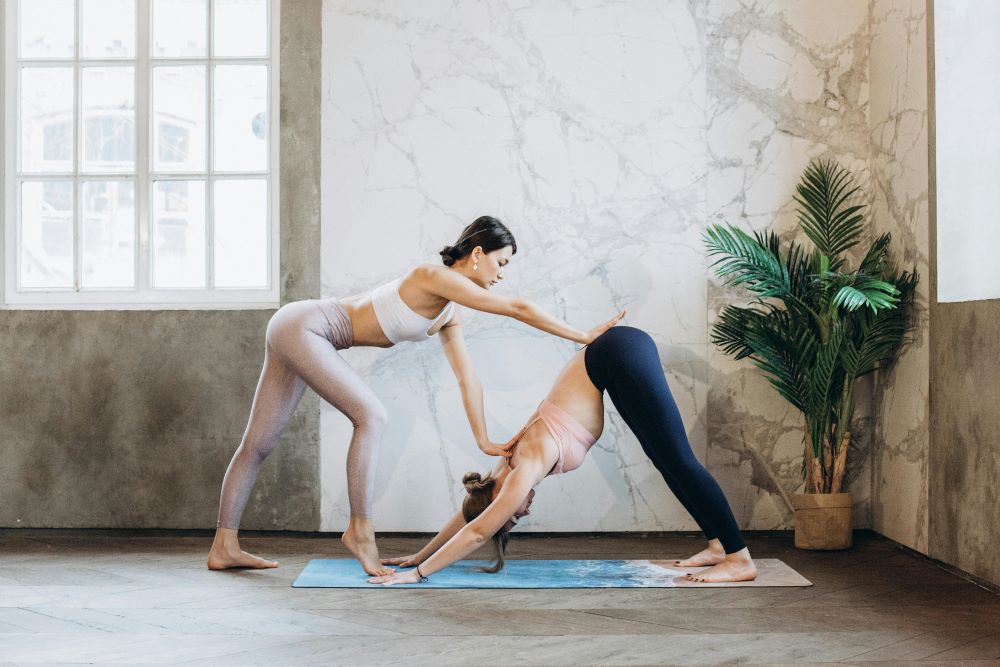
In this dynamic variation, practitioners transition seamlessly between cobra pose and other asanas, such as downward-facing dog or child’s pose, creating a sequence that flows together and strengthens.
What are the Steps to Perform Bhujangasana?
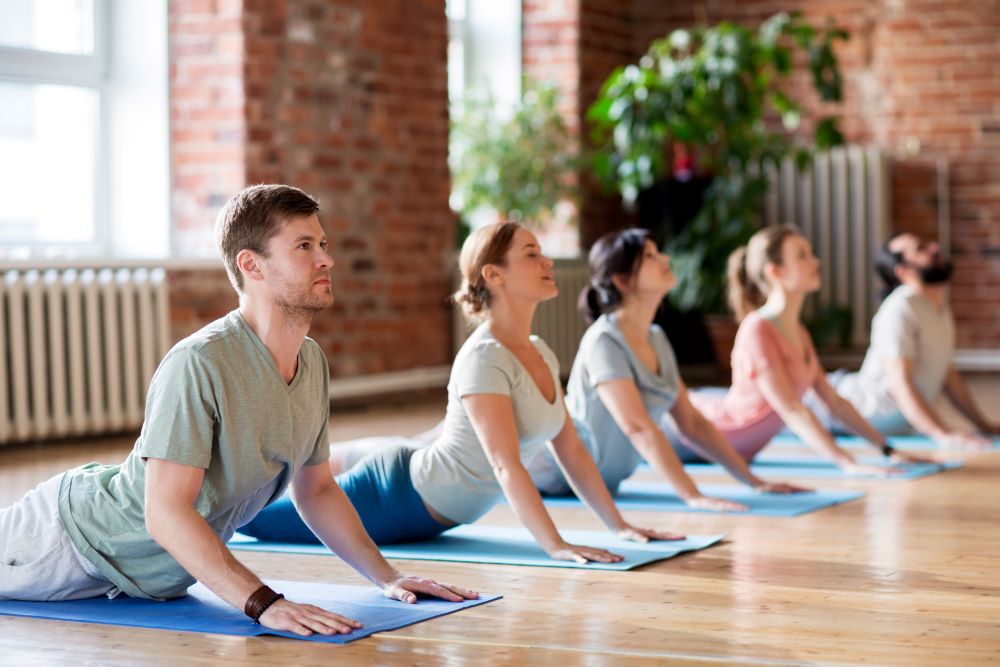
To perform this yoga pose with ease, follow the steps below:
- Step 1: Lie flat on the yoga mat with your chest and stomach touching the ground.
- Step 2: Place your palm on the sides of your chest and slowly raise your upper body. Remember to keep your elbows straight to avoid injury.
- Step 3: Lift your entire upper body. The body weight should fall on your hands and thighs, not your stomach.
- Step 4: Now, slowly bend your neck until you feel a stretch on your spine. Remember to inhale and hold your breath while performing this step.
- Step 5: After holding this position for 30-45 seconds, exhale and release your body slowly from neck to abdomen.
Things Required to Practise Bhujangasana (Cobra Pose)
Ensure you have the right elements for a safe and effective practice before starting Bhujangasana (Cobra Pose). Here are some of the things you need to think about before diving into this rejuvenating backbend:
- Yoga Mat: Your yoga mat provides a comfortable, non-slip surface for your practice and offers support and stability during poses.
- Comfortable Clothing: Wear comfortable, breathable, and stretchy clothes that allow ease of movement and do not hinder your range of motion.
- Quiet Space: Choose a quiet space to practise yoga without distractions and noise. This will allow you to concentrate on your breathing.
- Warm-Up: Create a gentle warm-up sequence for your body, including some movements to loosen the spine and open the chest area.
- Water: Always have water near you when exercising so as not to get dehydrated, especially when practised in hot climate areas.
- Mindful Breath: Throughout this activity, take long inhalations to expand your chest further while exhaling deeply for total release.
8 Tips for Practising Bhujangasana

This yoga posture can be very effective for your health only if you practise it correctly. Here are 8 tips to practise it perfectly:
Start Slowly: Start with a basic warm-up to get your body ready for the backbend, increasing the intensity gently each time.
Breathe Evenly: Breathing throughout the exercise can help you hold the pose longer.
Do Not Overstretch: Overstretching can strain your muscles and cause cramps, so avoid doing that.
Keep Your Feet Together: You can raise your abdomen a little more by keeping your feet together.
Shoulders Near Ears: Keep your shoulder near the ears if you want to deepen your stretch.
Head Must Not Move: Avoid unnecessary movement of your head, as it might give you a neck injury.
Use Core Muscles: Enable your core muscles to hold up the lower back and pelvis, thus avoiding straining.
Respect Your Body Limits: Be aware of how far you can go without discomfort. Do not go farther than your comfort allows.
Precautions and Contraindications of Bhujangasana
There are certain cases where it is not safe to perform Bhujangasana. So, if you find yourself in any of these, avoid adding this posture to your yoga regime. The precautions and contraindications are:
Pregnant Women: Cobra pose targets the abdomen, which can harm a pregnant woman's foetus.
Senior Citizen: People in old age suffer from weak and brittle bones. Thus, they should avoid practising this yoga.
Recovering From Surgery: If you are recovering from any surgery, do not practise this yoga or consult your doctor before doing so. Otherwise, you might face severe pain.
Low Physical Strength: If your core is comparatively weak and you have not practised yoga before, skip this pose. Instead, practise some simple yoga postures.
Internal or External Injury: If you have an injury, avoid this yoga posture, which will put pressure on the injured area and stimulate pain.
What are the Easy Modifications of Bhujangasana?

As a beginner, it might be challenging for you to perform this pose in one go. In this case, you can follow certain modifications:
Start From a Lying Position: You can start this position by lying on your belly. It is optional to begin with a plank position.
Place Your Forearms on the Floor: When you place your forearms on the floor, practising this yoga becomes easier. After a certain time, you can practise it on your palms.
Place a Blanket: Place a blanket below your pelvis, palms, or back. This will make performing this asana much easier.
Use a Prop or Chair: If you have a stiff back, use a prop like a chair or a wall where you can keep your palms for support. The prop will help you pull yourself up.
By reading the above details, you will know all the benefits of Bhujangasana. So adopt it in your yoga regime and practise it with precaution. As a result, you will finally be able to eliminate muscle stiffness and improve physical health.
Who Should Avoid Doing Bhujangasana?
Certain people may want to avoid it or modify their practice due to specific health conditions. Here are some situations when one should be cautious:
- Any Recent Back Injury: People with recent back injuries, such as herniated discs and severe back strain, should abstain from taking Bhujangasana until they regain their full fitness. Undertaking this pose may worsen the injury or prolong its recovery.
- Pregnancy: Expectant mothers, especially in the second and third trimesters, should not engage in deep backbends such as Bhujangasana. Rather, they may do modified versions of the pose under the guidance of a competent prenatal yoga teacher.
- Wrist or Shoulder Injury: If one has an injury to the wrist or shoulder, one must be careful while doing Bhujangasana, as this posture involves much weight-bearing on the arms. Thus, those injured parts will have to be relieved through modification.
- Serious Neck Problems: For example, persons with severe neck problems such as cervical spine instability or cervical disc issues would better avoid Bhujangasana. Alternatively, they can choose less stressful practices.
To sum up, Bhujangasana’s position on body, spirit, and mind underscores the concepts of yoga. This age-old discipline is transformative by examining how it is connected with various health benefits, including increased physical strength and mental focus.
However, amid all that its restorative powers can give to one’s life, there is a need for care and mindfulness of individual limitations. Thus, celebrate the journey ahead and respect your body because when you are doing this asana, it will direct you towards healthier living and inward equilibrium.













